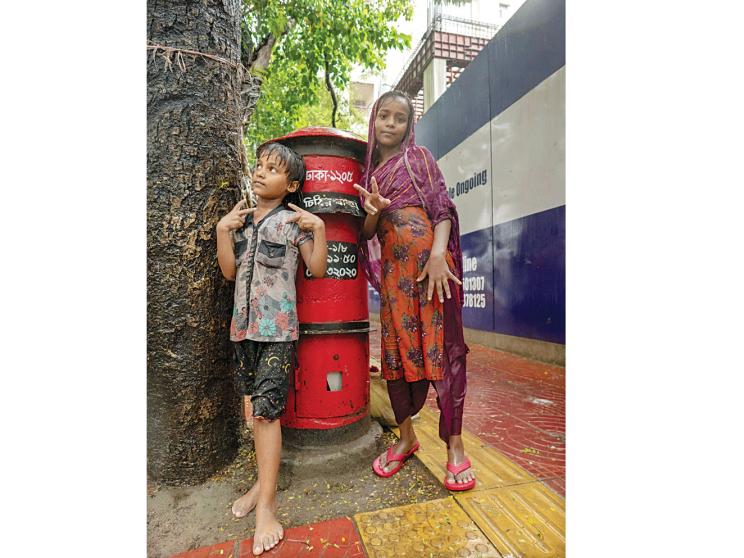An ode to the resilience of street children

Street children collecting scraps or sleeping on footpaths is a common scene in Dhaka but their stories of resilience often go untold. The city's landscape -- teeming streets and crowded marketplaces -- serves as both a playground and a battleground for these young souls.
How often do we stop and hear the stories they have to tell?
Runa, 7 or 8, comes with her two sisters to sell flowers at Dhanmondi 32. When asked what she likes about the lake, she responded, "I like playing with my sisters, and whenever we can save some money, we ride boats on the lake."
Orphaned at an early age, neither Runa nor her sisters had the privilege to attend school. Like thousands of street children in Dhaka, they live from hand to mouth.
Yet, amidst these adversities, the spirit of these children remains unbroken. They display an extraordinary sense of community, sharing their meagre resources with each other and finding moments of joy in the simplest of things -- a boat ride, a shared meal, or a game played with pebbles.

Rifat, who lives on the sidewalks of Manik Mia Avenue, was seen pushing a discarded tire with a stick. He said his father was a rickshaw puller and died in an accident. Now, his mother has to beg to survive and he pushes tyres or makes paper kites to pass his time. Rifat is a reflection of the harsh reality we have in Dhaka.
Education, a basic right for children worldwide, remains a distant dream for many of these children. The hardships they endure are not just economic but also social and emotional. These children often face societal stigma, seen as nuisances rather than children in need of care and protection. They are vulnerable to exploitation, with many falling prey to substance abuse, child labour, and even trafficking.
The psychological toll of living in constant uncertainty, without the security of a home or the love of a family, is immense. Nevertheless, these young individuals display exceptional entrepreneurial spirits -- showcasing an innate ability to transform challenges into opportunities.
Noyon, who sells socks at Gudaraghat, shared his story of survival.
"I lost my parents when I was about 10 and lived with my uncle. But soon I became homeless and to support myself, engaged in small jobs like selling socks or working in roadside hotels."
Surprisingly, Noyon still pursues his studies, loves to play football, and dreams of becoming a doctor. But what made him leave his uncle and turn to the streets? Noyon explained, "My uncle is very abusive, and so is his wife. I felt unsafe there, and they didn't want me to continue my studies but rather work in a metal stamping plant, just as others did in our slum. So, I had no choice but to leave."
Street children pick up skills that help them navigate their challenging world -- from hawking small items to passers-by to selling buckets of flowers at traffic signals for a few takas. These acts of survival, while showcasing their resilience, also reflect the grave reality of lost childhoods.
It is important to acknowledge that their situation demands more than just admiration for their strength. They need policies that would protect them and give them the childhood they deserve. As we go about our lives, let us remember these children -- not with pity, but with respect and a commitment to contribute -- in whatever way we can, to make their world a little brighter.



 For all latest news, follow The Daily Star's Google News channel.
For all latest news, follow The Daily Star's Google News channel.